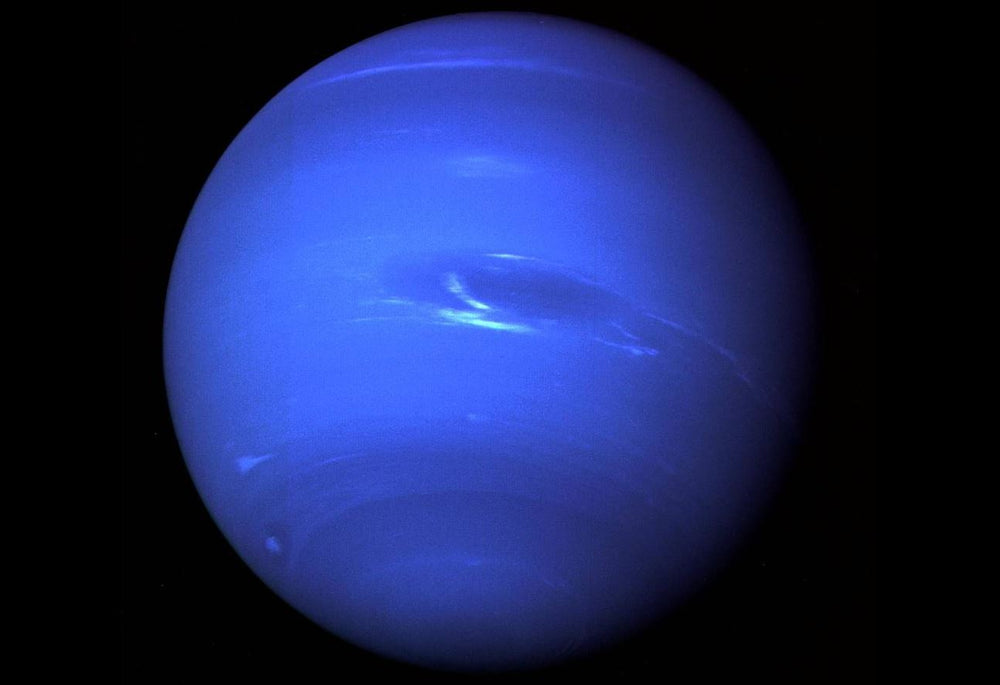Mass of Neptune
Neptune, the eighth and farthest planet from the Sun, holds a captivating allure with its mesmerizing blue hue and intriguing atmospheric features. Among its many enigmatic qualities, the mass of Neptune stands as a key element that reveals insights into its composition, gravitational forces, and its position within our solar system. In this blog post, we embark on an illuminating journey to unravel the mysteries of Neptune's mass, shedding light on its significance and the scientific discoveries surrounding this majestic ice giant.
Understanding Mass: The Gateway to Neptune's Cosmic Realm
Mass serves as a fundamental property that measures the amount of matter contained within an object. In the context of celestial bodies such as Neptune, mass determines the strength of gravitational forces, influences orbital dynamics, and offers insights into composition.
Neptune's Enigmatic Mass: An Icy Giant in the Outer Reaches
Neptune, classified as an ice giant, possesses a mass that sets it apart from other planets in our solar system. With a mass approximately 17 times that of Earth, Neptune exerts a gravitational force approximately 1.14 times stronger than Earth's. This substantial mass contributes to Neptune's intriguing characteristics and its significant role within the cosmic dance.

Mass of Neptune Compared to Earth in Percentage
The mass of Neptune is approximately 17.15 times that of Earth. To express this as a percentage, you can use the formula:
Substituting the values:
So, the mass of Neptune is about 1715% of the mass of Earth. Neptune is significantly more massive than Earth.
Implications for Neptune's Composition: An Icy Realm Unveiled
Neptune's mass provides valuable insights into its composition. Primarily composed of hydrogen and helium, with traces of methane and other compounds, Neptune's unique combination of elements, influenced by its mass, contributes to its vibrant blue color and the presence of dynamic weather patterns within its atmosphere.
Gravitational Forces and Neptune's Dynamic Features
The mass of Neptune plays a pivotal role in its gravitational forces. Its immense gravitational pull shapes the dynamics of its moons, influences atmospheric circulation patterns, and creates distinct features such as its Great Dark Spot and bright clouds. Neptune's significant mass contributes to the captivating phenomena observed on this distant ice giant.
Orbital Dynamics: Neptune's Dance in the Outer Realm
Neptune's mass dictates its orbital dynamics within our solar system. The interplay between its mass and the gravitational forces exerted by the Sun and neighboring celestial bodies determines Neptune's orbit, positioning, and interactions within the cosmic ensemble. Understanding Neptune's mass helps predict its trajectory and behavior.
Determining Neptune's Mass: Unveiling the Secrets of the Ice Giant
Scientists employ various methods to accurately determine Neptune's mass. These include analyzing its gravitational effects on its moons, spacecraft, and other celestial bodies. Through precise calculations and observations, scientists estimate Neptune's mass, refining our understanding of its composition, structure, and dynamics.
Significance for Planetary Science: Illuminating the Secrets of Neptune
Studying Neptune's mass holds significant importance in planetary science. It offers valuable insights into the formation and evolution of ice giants, the role of volatile compounds, and the dynamics of planetary systems. By unraveling the mysteries concealed within Neptune's mass, scientists deepen their understanding of planetary processes and gain a broader perspective on the vastness and diversity of our cosmic neighborhood.
Future Exploration and Discoveries: Advancing Our Knowledge of Neptune's Mass
Future space missions, such as NASA's proposed Trident mission, aim to gather further data to enhance our understanding of Neptune's mass and unlock its mysteries. These missions will provide detailed measurements of Neptune's composition, atmosphere, magnetic field, and gravitational field, expanding our knowledge of its mass distribution and shedding light on its captivating nature.
Conclusion
Neptune, with its mesmerizing blue beauty and intriguing dynamics, offers a gateway to explore the wonders of our solar system. By delving into the mass of Neptune, we gain valuable insights into its composition, gravitational forces and orbital dynamics. Staying informed, following space agency updates, engaging in scientific discussions, exploring Neptune missions and data, accessing educational resources, and visiting planetariums and science museums can deepen your knowledge and appreciation for Neptune's mass. Embrace the mystique of this distant ice giant and continue to unravel the weighty secrets that lie within its captivating realm. As our understanding of Neptune's mass expands, so does our comprehension of the vastness and complexity of the universe. Join the cosmic exploration and immerse yourself in the enigmatic world of Neptune.
Read more about Neptune:
- Neptune distance from the Sun
- Does Neptune have clouds?
- How did Neptune get its name
- Facts about Neptune
- When was Neptune discovered?
- How many rings does Neptune have?
- How many moons does Neptune have?
- How long does it take Neptune to orbit the sun
- What is Neptune made of
Read more about Masses of Planets:

